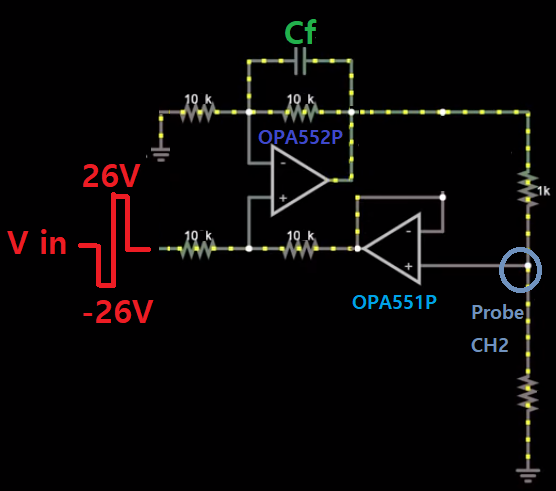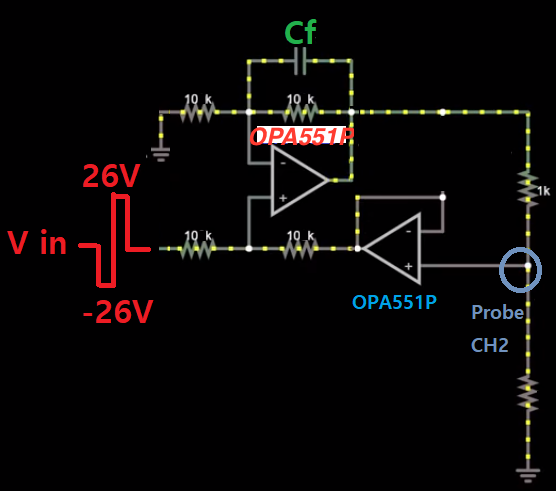Other Parts Discussed in Thread: TINA-TI
I use 2 OPA552P and one OPA551P. One OPA552P is configured as a non-inverting amplifier.
One OPA552P and one OPA551P is used for creating the improved Howland Current Pump.
A 100 Hz periodic signal is fed to the Op Amp.
If I don't add a capacitor, the output voltage from the node is unstable like this. An amplitude of 2V of the sine wave is discovered.
But surprisingly, if I connect my Tektronix TPP0100 probe (1 MΩ/13 pF) to OPA552P's (-) input, the load's output voltage becomes stable.
I tried 5 pF, 10 pF as a feedback capacitor, but this cannot make the output voltage stable.
How should I determine the feedback capacitor's size? I hope someone could explain this behavior when a probe is connected.




